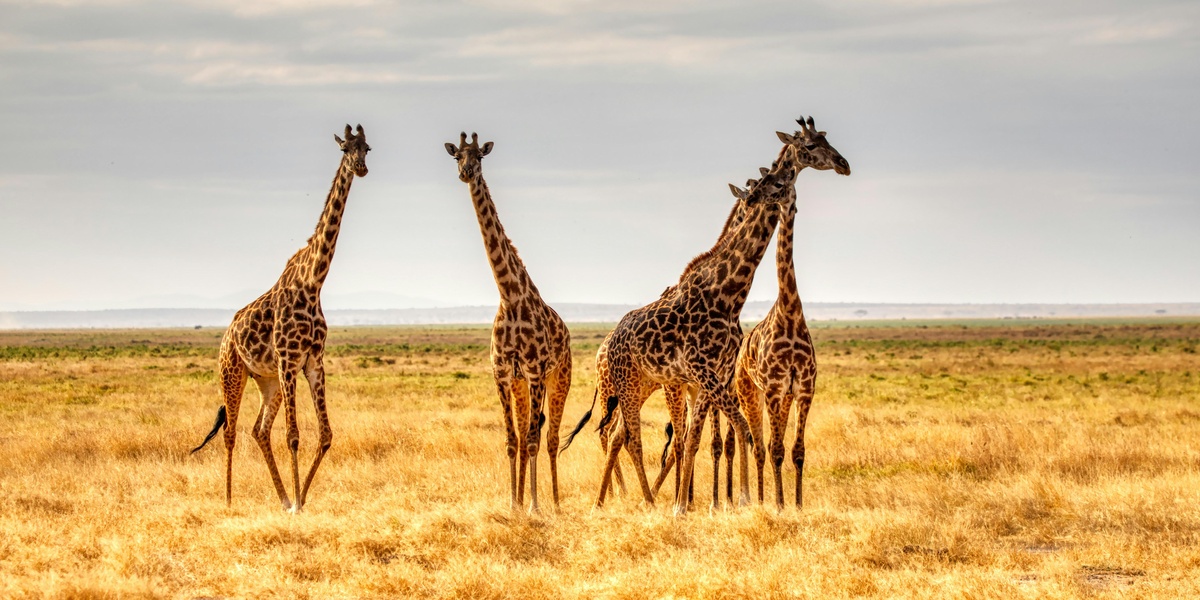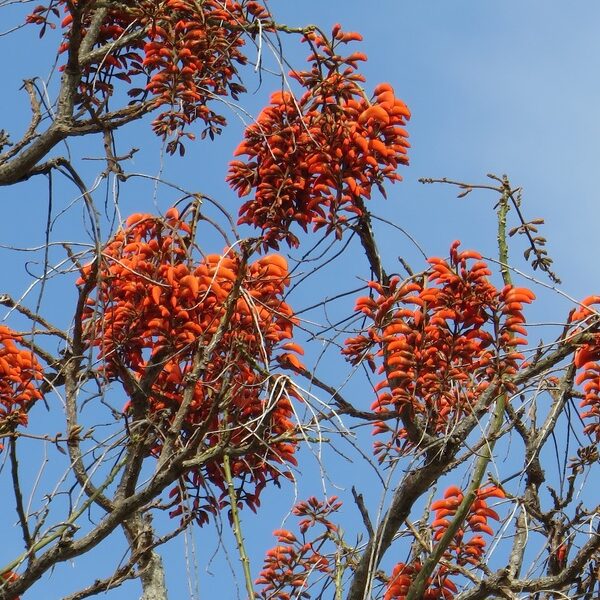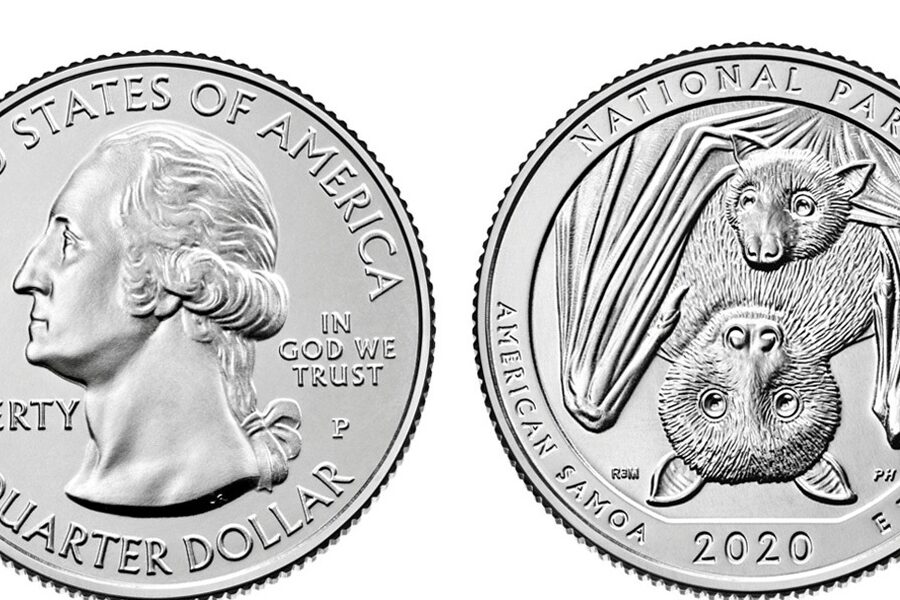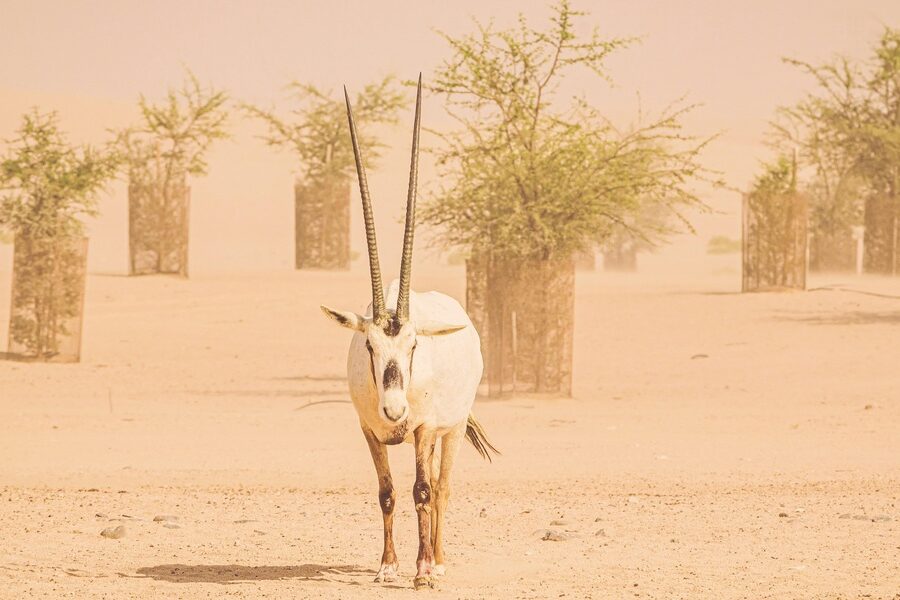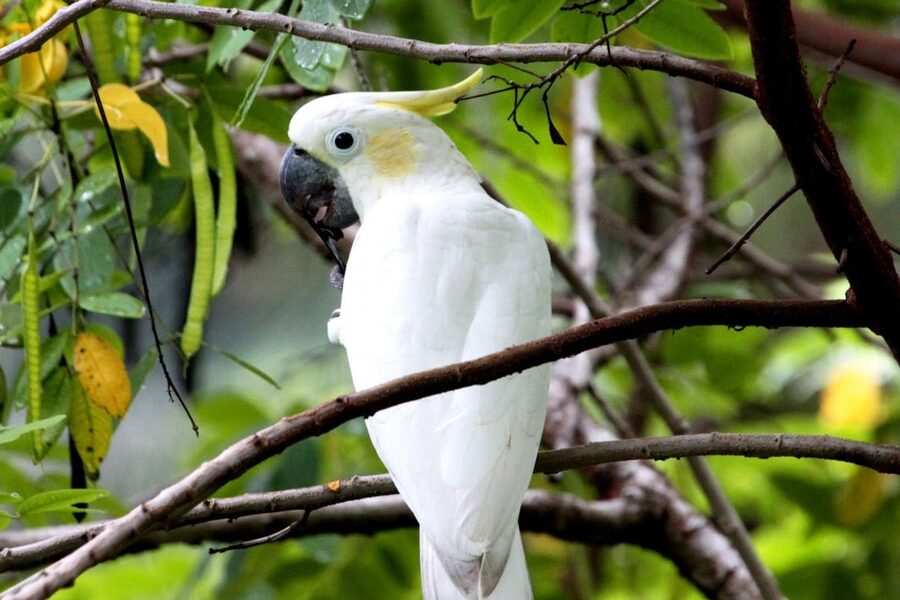This list contains 68 savanna mammals from around the world, with most entries drawn from Sub‑Saharan African tropical savannas but also including species from Asia, Australia, and the Americas. Note the pattern: many are large herbivores and predators that shape savanna plants and food webs. The table shows each species’ common name, scientific name (Latin), range and savanna type, and conservation status (per the IUCN Red List: https://www.iucnredlist.org).
Use the table below to find quick facts on each mammal: common and scientific names, where it lives, the savanna subtype, and its conservation status.
What regions and savanna types are covered?
The list covers global savannas. Most species come from African tropical savannas. The list also includes dry savannas, riverine and floodplain savannas, the South American Cerrado and Llanos, South Asian dry savannas, and Australian tropical and arid savannas. Expect mammals that live in open grasslands, mixed woodlands, floodplains, and arid scrub within those regions.
How do I read the columns in the table?
Read each row for one species. Scientific name gives the Latin name for precise ID. Range and savanna type explain where the animal lives and the kind of savanna it prefers. Status shows conservation risk using IUCN categories like Least Concern, Vulnerable, Endangered, or Critically Endangered. Use these columns to compare species, plan field study lists, or prepare for ecotours.
Savanna Mammals
| Name | Scientific name | Range and savanna type | Status |
|---|---|---|---|
| African Elephant | Loxodonta africana | Sub-Saharan Africa — African tropical savanna | Endangered |
| African Buffalo | Syncerus caffer | Sub-Saharan Africa — African tropical savanna | Least Concern |
| Giraffe | Giraffa camelopardalis | Sub-Saharan Africa — African tropical savanna | Vulnerable |
| Plains Zebra | Equus quagga | Sub-Saharan Africa — African tropical savanna | Near Threatened |
| Grevy’s Zebra | Equus grevyi | Sub-Saharan Africa — African tropical savanna | Endangered |
| Blue Wildebeest | Connochaetes taurinus | Sub-Saharan Africa — African tropical savanna | Least Concern |
| Black Rhinoceros | Diceros bicornis | Sub-Saharan Africa — African tropical savanna | Critically Endangered |
| White Rhinoceros | Ceratotherium simum | Sub-Saharan Africa — African tropical savanna | Near Threatened |
| Lion | Panthera leo | Sub-Saharan Africa — African tropical savanna | Vulnerable |
| Cheetah | Acinonyx jubatus | Sub-Saharan Africa — African tropical savanna | Vulnerable |
| Leopard | Panthera pardus | Sub-Saharan Africa — African tropical savanna | Vulnerable |
| African Wild Dog | Lycaon pictus | Sub-Saharan Africa — African tropical savanna | Endangered |
| Spotted Hyena | Crocuta crocuta | Sub-Saharan Africa — African tropical savanna | Least Concern |
| Aardvark | Orycteropus afer | Sub-Saharan Africa — African tropical savanna | Least Concern |
| Aardwolf | Proteles cristata | Sub-Saharan Africa — African tropical savanna | Least Concern |
| Warthog | Phacochoerus africanus | Sub-Saharan Africa — African tropical savanna | Least Concern |
| Eland | Taurotragus oryx | Sub-Saharan Africa — African tropical savanna | Least Concern |
| Kudu | Tragelaphus strepsiceros | Sub-Saharan Africa — African tropical savanna | Least Concern |
| Roan Antelope | Hippotragus equinus | Sub-Saharan Africa — African tropical savanna | Least Concern |
| Sable Antelope | Hippotragus niger | Sub-Saharan Africa — African tropical savanna | Least Concern |
| Topi | Damaliscus lunatus | Sub-Saharan Africa — African tropical savanna | Near Threatened |
| Grant’s Gazelle | Nanger granti | Sub-Saharan Africa — African tropical savanna | Least Concern |
| Thomson’s Gazelle | Eudorcas thomsonii | Sub-Saharan Africa — African tropical savanna | Near Threatened |
| Impala | Aepyceros melampus | Sub-Saharan Africa — African tropical savanna | Least Concern |
| Springbok | Antidorcas marsupialis | Southern Africa — African dry savanna; Kalahari | Least Concern |
| Dik-dik | Madoqua kirkii | Sub-Saharan Africa — African tropical savanna | Least Concern |
| Steenbok | Raphicerus campestris | Sub-Saharan Africa — African tropical savanna | Least Concern |
| Gerenuk | Litocranius walleri | East Africa — African dry savanna | Near Threatened |
| Kirk’s Dik-dik | Madoqua kirkii | East Africa — African tropical savanna | Least Concern |
| Black-backed Jackal | Canis mesomelas | Sub-Saharan Africa — African tropical savanna | Least Concern |
| African Golden Wolf | Canis anthus | North; East Africa — African dry savanna | Least Concern |
| Bat-eared Fox | Otocyon megalotis | Sub-Saharan Africa — African tropical savanna | Least Concern |
| Caracal | Caracal caracal | Africa; Asia — African and Asian savanna | Least Concern |
| Serval | Leptailurus serval | Sub-Saharan Africa — African tropical savanna | Least Concern |
| Honey Badger | Mellivora capensis | Sub-Saharan Africa — African tropical savanna | Least Concern |
| African Civet | Civettictis civetta | Sub-Saharan Africa — African tropical savanna | Least Concern |
| Meerkat | Suricata suricatta | Southern Africa — African arid savanna; Kalahari | Least Concern |
| Banded Mongoose | Mungos mungo | Sub-Saharan Africa — African tropical savanna | Least Concern |
| Yellow Mongoose | Cynictis penicillata | Southern Africa — African dry savanna; grassland | Least Concern |
| Porcupine | Hystrix africaeaustralis | Sub-Saharan Africa — African tropical savanna | Least Concern |
| Springhare | Pedetes capensis | Southern; Eastern Africa — African dry savanna | Least Concern |
| Cape Ground Squirrel | Xerus inauris | Southern Africa — African dry savanna; Kalahari | Least Concern |
| Cape Hare | Lepus capensis | Africa; Asia — African and Asian dry savanna | Least Concern |
| Hippopotamus | Hippopotamus amphibius | Sub-Saharan Africa — Riverine savanna; floodplain | Vulnerable |
| Pangolin (Ground Pangolin) | Smutsia temminckii | Sub-Saharan Africa — African tropical savanna | Vulnerable |
| Vervet Monkey | Chlorocebus pygerythrus | Sub-Saharan Africa — African tropical savanna | Least Concern |
| Olive Baboon | Papio anubis | Sub-Saharan Africa — African tropical savanna | Least Concern |
| Patas Monkey | Erythrocebus patas | Sub-Saharan Africa — African dry savanna | Least Concern |
| Blackbuck | Antilope cervicapra | South Asia — South Asian grassland savanna | Near Threatened |
| Nilgai | Boselaphus tragocamelus | South Asia — South Asian dry savanna; scrub | Least Concern |
| Chital | Axis axis | South Asia — South Asian dry deciduous savanna | Least Concern |
| Indian Gazelle | Gazella bennettii | South Asia — South Asian arid savanna | Near Threatened |
| Indian Elephant | Elephas maximus | South; Southeast Asia — Dry deciduous savanna mosaics | Endangered |
| Maned Wolf | Chrysocyon brachyurus | South America — Cerrado (South American savanna) | Near Threatened |
| Giant Anteater | Myrmecophaga tridactyla | South America — Cerrado; Llanos | Vulnerable |
| Crab-eating Fox | Cerdocyon thous | South America — Cerrado; Llanos savannas | Least Concern |
| Pampas Fox | Lycalopex gymnocercus | South America — Grassland savanna and edges | Least Concern |
| Capybara | Hydrochoerus hydrochaeris | South America — Llanos; Cerrado wetlands and floodplains | Least Concern |
| White-tailed Deer | Odocoileus virginianus | North; South America — Llanos and savanna mosaics | Least Concern |
| Collared Peccary | Pecari tajacu | Americas — Llanos and savanna mosaics | Least Concern |
| Red Kangaroo | Osphranter rufus | Australia (Northern; Central) — Australian arid and tropical savanna | Least Concern |
| Eastern Grey Kangaroo | Macropus giganteus | Australia (Eastern; Northern) — Australian tropical savanna; woodland | Least Concern |
| Antilopine Kangaroo | Osphranter antilopinus | Australia (Northern) — Australian tropical savanna | Least Concern |
| Agile Wallaby | Notamacropus agilis | Australia (Northern) — Australian tropical savanna | Least Concern |
| Common Wallaroo | Osphranter robustus | Australia — Australian savanna and rocky plains | Least Concern |
| Dingo | Canis lupus dingo | Australia — Australian tropical savanna; grassland | Vulnerable |
| Northern Quoll | Dasyurus hallucatus | Australia (Northern) — Australian tropical savanna | Endangered |
| Black Flying-fox | Pteropus alecto | Australia; New Guinea — Australian tropical savanna | Least Concern |
Images and Descriptions
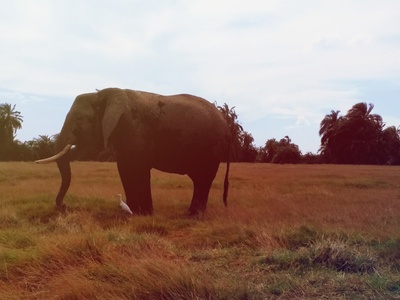
African Elephant
The largest land mammal, a keystone grazer and browser shaping savanna vegetation with long trunks and tusks. Highly social, forms matriarchal herds and migrates seasonally following water and food availability.
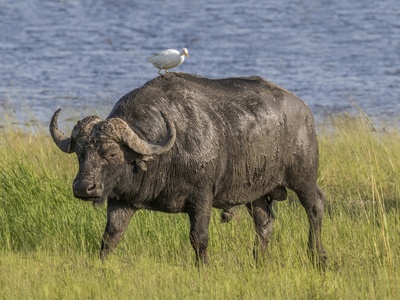
African Buffalo
A powerful, herding grazer common in wet and dry savanna grasslands. Known for strong social bonds and defensive behavior against predators; important prey for large predators and an influential ecosystem grazer.
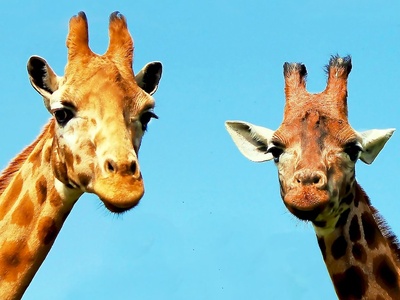
Giraffe
The world’s tallest land mammal, a browsing specialist that feeds on acacia and other savanna trees. Gentle and social, giraffes use height to spot predators and influence tree structure through selective feeding.
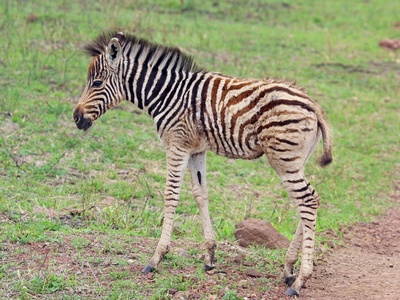
Plains Zebra
A striped grazing equid of open savanna plains, living in herds and migrating seasonally. Stripes may deter flies and provide camouflage in tall grasses; key prey species for large predators.
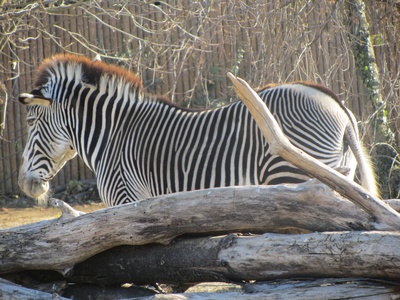
Grevy’s Zebra
A larger, narrow-striped zebra adapted to arid and semi-arid savannas. More solitary and territorial than plains zebra, it relies on sparse water and sparse grasses, making it vulnerable to habitat loss.
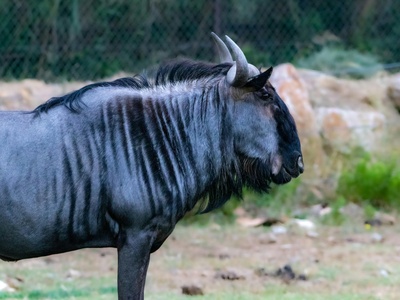
Blue Wildebeest
A migratory grazing ungulate central to savanna ecology, famous for huge seasonal movements following rains. Forms massive herds that influence grassland dynamics and support large predators and scavengers.
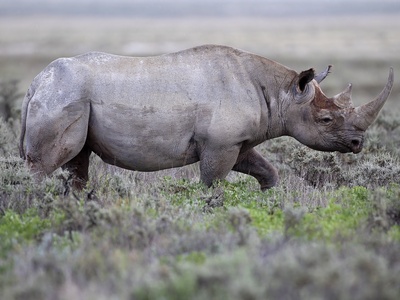
Black Rhinoceros
A browsing rhinoceros of bushland and woodlands, with hooked upper lip adapted for browsing shrubs. Critically threatened by poaching and habitat loss; conservation efforts focus on anti-poaching and habitat protection.
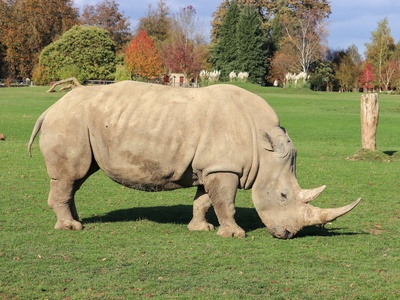
White Rhinoceros
A large grazing rhino of open savanna grasslands with a broad mouth for grazing. Social and often found in small groups; vulnerable to hunting and habitat changes despite conservation successes.
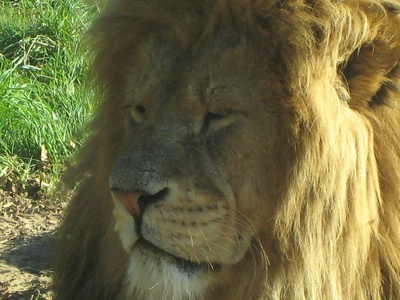
Lion
The apex social predator of savannas that lives in prides and hunts cooperatively. Feeds on large ungulates, influences prey populations, and is culturally iconic but threatened by conflict and habitat fragmentation.
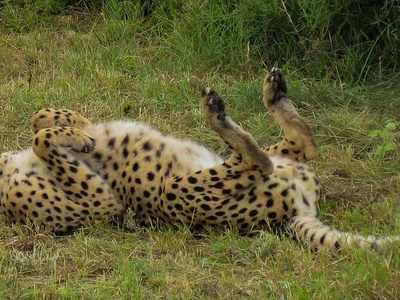
Cheetah
The world’s fastest land mammal, specialized for daytime pursuit hunting on open savanna. Lightweight build permits explosive speed, but it is vulnerable to habitat loss, conflict, and limited genetic diversity.
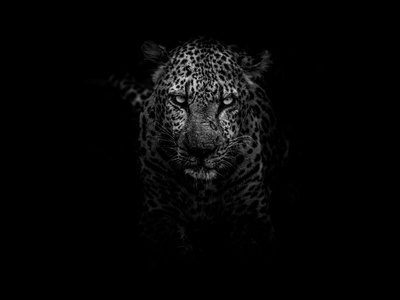
Leopard
A versatile ambush predator using trees, shrubs, and rocky cover in savannas. Solitary and adaptable, leopards prey on a wide range of animals and persist near human landscapes more often than larger cats.
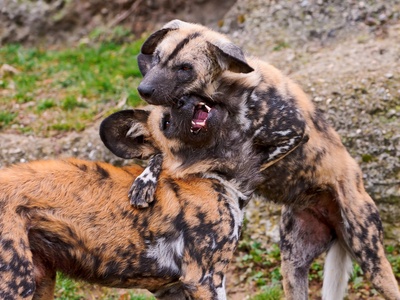
African Wild Dog
A highly social and cooperative pack hunter of open savanna and dry woodlands, known for stamina and coordinated pursuit. Suffering from small populations, disease, and habitat fragmentation, it requires large territories.
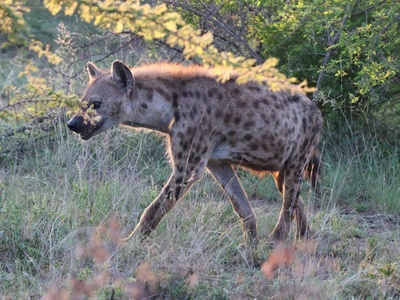
Spotted Hyena
A common and adaptable scavenger and predator that thrives in savanna ecosystems. Lives in clans with complex social structures, capable hunters and important recyclers of carcasses and nutrients.
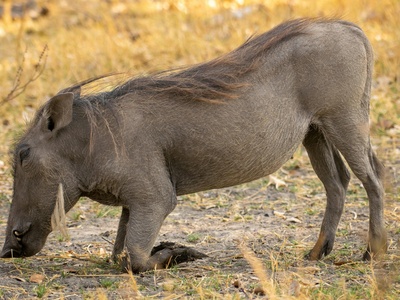
Aardvark
A nocturnal burrowing mammal that feeds almost exclusively on termites and ants. Uses powerful digging claws and a long sticky tongue, shaping soil and termite mound dynamics in savannas.
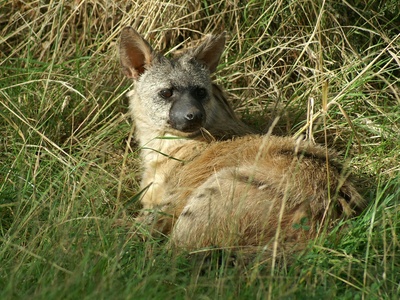
Aardwolf
A small hyena relative specialized on termites, especially at night. Solitary or small-family living, it avoids large carcasses and plays a unique insectivorous role in savanna food webs.
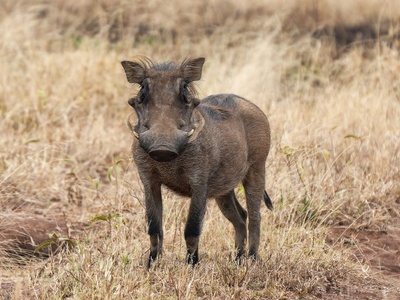
Warthog
A rugged, tusked suid that grazes and roots in savanna grasslands, often seen kneeling to feed. Uses burrows for shelter and relies on speed and tusks to defend against predators.
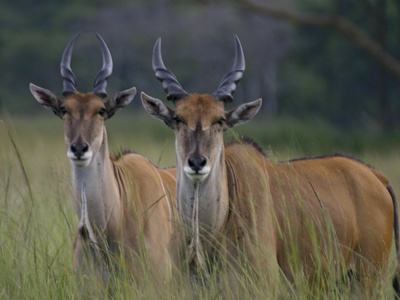
Eland
The largest antelope; mixes grazing and browsing habits in savannas. Social and sometimes migratory, elands influence vegetation structure and provide prey for large predators.
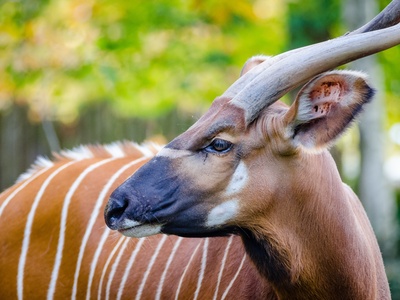
Kudu
A spiral-horned browser of savanna woodlands and thickets with excellent camouflage. Mostly solitary or small groups, kudus feed on leaves and twigs and are prized game species.
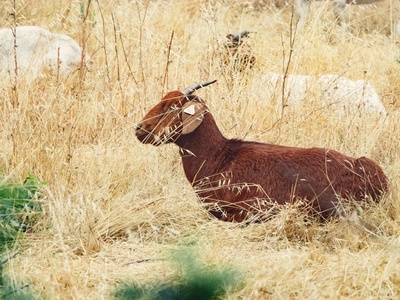
Roan Antelope
A large grazing antelope of open savanna and grassland with striking face markings. Lives in small herds and prefers tall grasses near woodlands, influencing grassland composition.
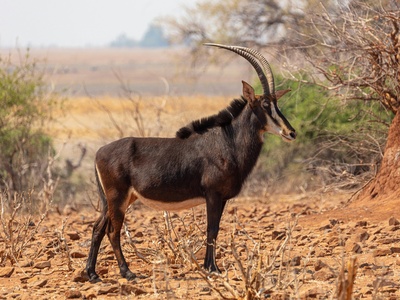
Sable Antelope
A striking black-and-white antelope of savanna woodlands and grasslands with long curved horns. Territorial herds graze on grasses and are important for predator-prey dynamics.
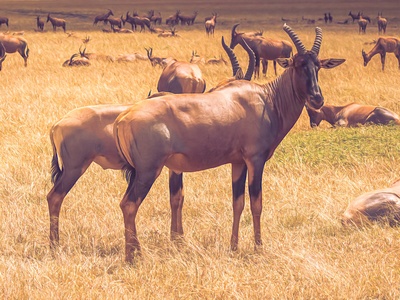
Topi
A fast, alert grazing antelope of open savanna plains, often forming large herds. Seasonal movements follow fodder availability, and they are vulnerable to habitat fragmentation and hunting.
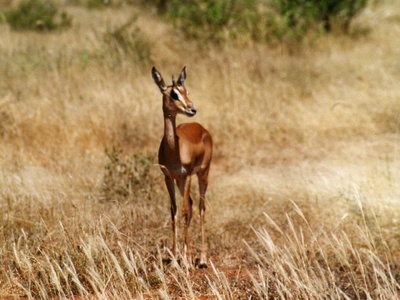
Grant’s Gazelle
A medium-sized gazelle of dry and mixed savannas, agile and fast. Feeds on grasses and browse, often seen in mixed-species herds with other ungulates to reduce predation risk.
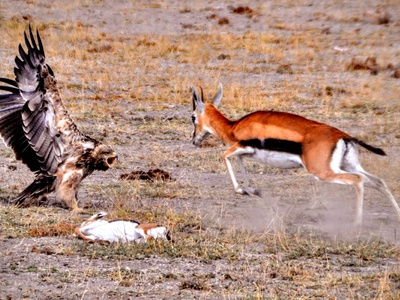
Thomson’s Gazelle
A small, swift gazelle common on open savanna known for high-speed escapes and distinctive markings. Important prey for cheetahs and other predators; sensitive to habitat change.
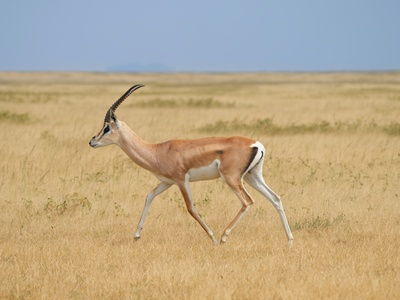
Impala
A versatile and abundant browser-grazer of savanna woodlands and grasslands. Forms herds, performs dramatic leaps when alarmed, and is a key prey species sustaining large predator populations.
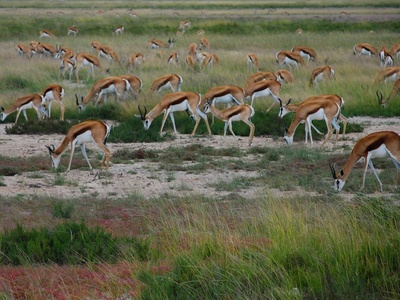
Springbok
A graceful antelope of arid savannas and plains known for spectacular bounding leaps called pronking. Well-adapted to dry environments and often forms large nomadic groups.
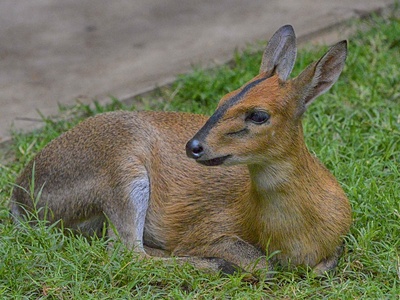
Dik-dik
A tiny, solitary antelope of grassy savanna and scrub that defends small territories. Highly alert and cryptic, dik-diks feed on leaves and fruit and avoid larger competitors.
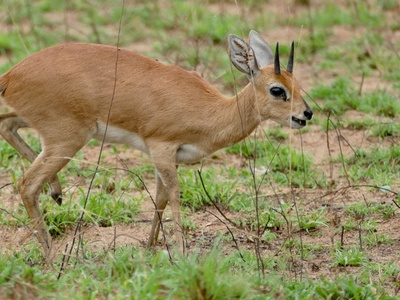
Steenbok
A small, solitary antelope of open savanna and grassland, feeding on low vegetation and shrubs. Uses cover and quick flight to escape predators and survives in sparse habitats.
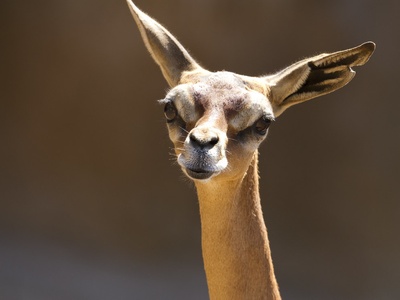
Gerenuk
A long-necked browsing antelope that stands on hind legs to reach high acacia foliage. Specialized feeding behavior reduces competition and makes it a distinctive savanna specialist.
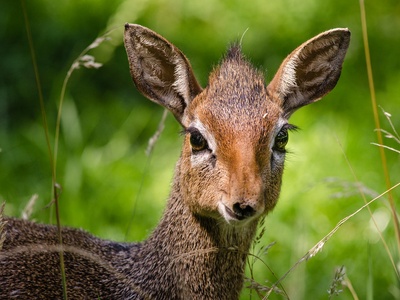
Kirk’s Dik-dik
A small, deer-like antelope occupying savanna and bushland, defending compact territories with strong pair bonds. Relies on browse and water conservation behaviors in drier savannas.
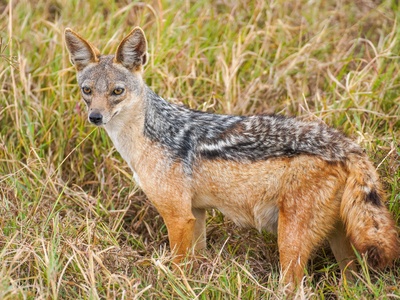
Black-backed Jackal
An opportunistic omnivore of open savanna that scavenges and hunts small mammals and birds. Highly adaptable, it frequently exploits human-altered landscapes and avoids larger predators.
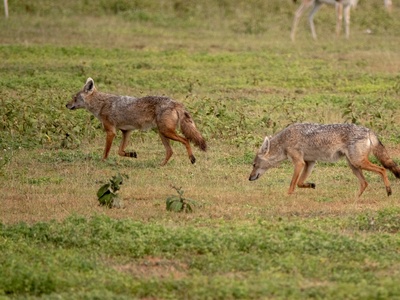
African Golden Wolf
A small canid of savanna and semi-arid regions that hunts rodents, grazers, and carrion. Often solitary or in pairs, it has a flexible diet and adapts well to varied habitats.
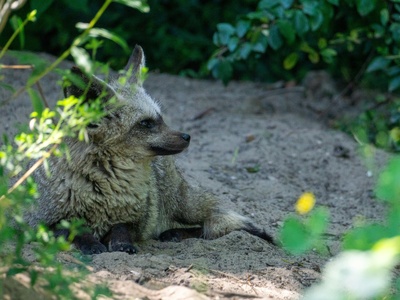
Bat-eared Fox
An insectivorous fox of open short-grass savannas with large ears for hearing termite and beetle activity. Lives in colonies and shows specialized feeding and burrowing habits.
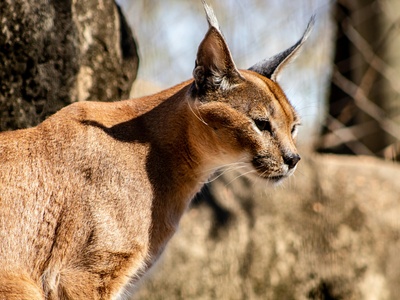
Caracal
A medium-sized, stealthy solitary cat that hunts birds and mammals in savanna and scrub. Known for leaping to catch birds in flight and surviving in varied open habitats.
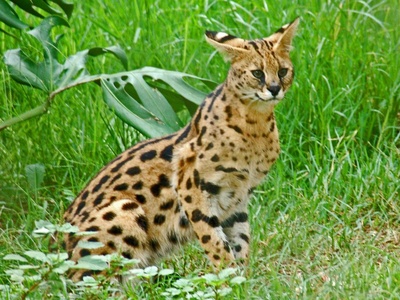
Serval
A long-legged cat adapted to tall grass hunting, preying on rodents and birds with exceptional hearing. Prefers wet grasslands and mosaics where small prey are abundant.
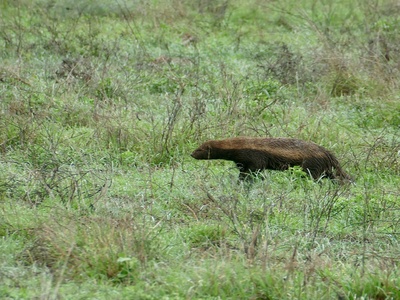
Honey Badger
A fearless omnivore known for bold behavior and broad diet including honey, small mammals, and reptiles. Uses burrows and termite mounds and is highly resilient to many threats.

African Civet
A nocturnal omnivore of savanna mosaics that forages for fruit, small animals, and invertebrates. Produces musk historically used in perfumes and is secretive and solitary.
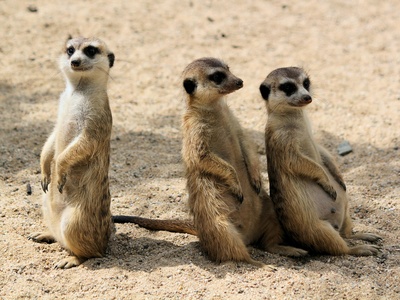
Meerkat
A highly social mongoose living in cooperative groups in open sandy savanna. Sentinels watch for predators while others forage for insects and small vertebrates in a complex social system.
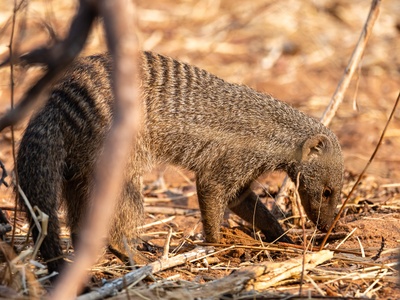
Banded Mongoose
A social predator of insects and small vertebrates that forages in groups across savanna habitats. Cooperative breeding and coordinated defense characterize its communal life and survival strategies.
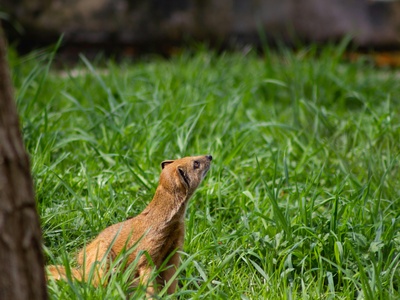
Yellow Mongoose
A diurnal ground-dwelling mongoose of open savanna, feeding on insects and small vertebrates. Lives in burrow systems and often basks in the sun on termite mounds or rocks.

Porcupine
A nocturnal herbivore that feeds on roots, bark, and vegetation, protected by quills. Influences plant communities and creates shelter opportunities for other animals through burrow use and bark stripping.
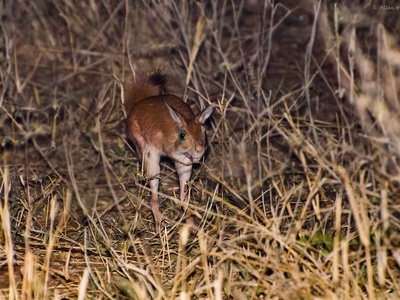
Springhare
A nocturnal hopping rodent adapted to grassy savannas with long hind legs for jumping. Feeds on roots and seeds, digs burrows, and is active in arid and semi-arid landscapes.
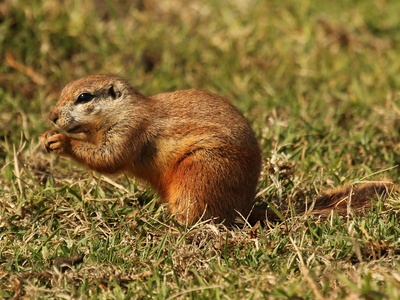
Cape Ground Squirrel
A diurnal ground squirrel of open arid savanna that lives in colonies and constructs burrows. Feeds on seeds, grasses, and bulbs and helps disperse seeds and aerate soils.
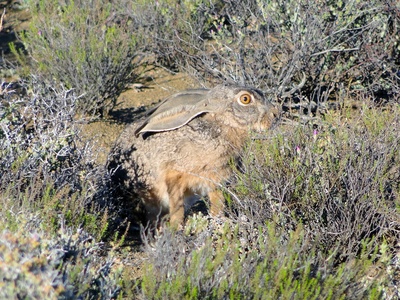
Cape Hare
A widespread hare of open savanna and semi-arid plains that feeds on grasses and shrubs. Fast and nocturnal, it avoids predators with speed and camouflage in open habitats.
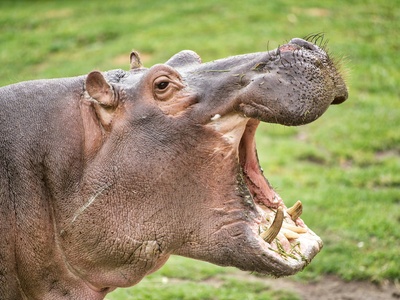
Hippopotamus
An amphibious grazer tied to rivers and floodplains within savanna landscapes. Spends days in water to stay cool and emerges at night to feed on grasses, shaping riverbank ecosystems.
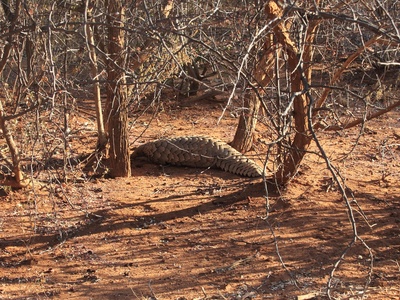
Pangolin (Ground Pangolin)
A scaled, nocturnal ant-eater that digs for termites and ants, protected by keratin scales. Highly threatened by poaching and trafficking; plays a role in insect population control.
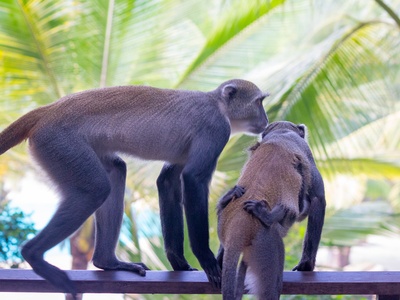
Vervet Monkey
A common tree-and-ground primate of savanna woodlands known for social groups and vocal communication. Omnivorous and adaptable, often found near water and human settlements.
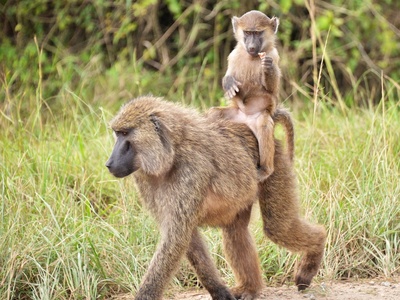
Olive Baboon
A large, social primate of savanna and open woodland that forages on fruit, leaves, and small animals. Lives in complex troops and can thrive in diverse savanna habitats.
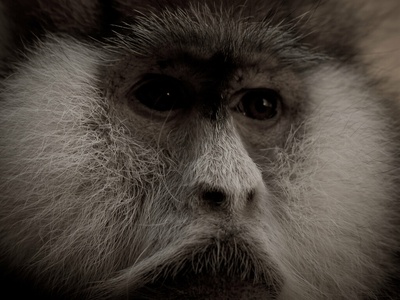
Patas Monkey
A fast, terrestrial monkey adapted to open dry savanna, feeding on seeds, gums, and insects. Lives in loose groups and relies on speed to escape predators across flat terrain.
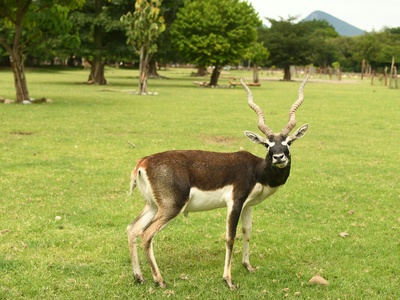
Blackbuck
A distinctive antelope with spiraled horns native to Indian grassland savannas. Agile and territorial, it grazes open plains and has cultural and conservation significance in its range.
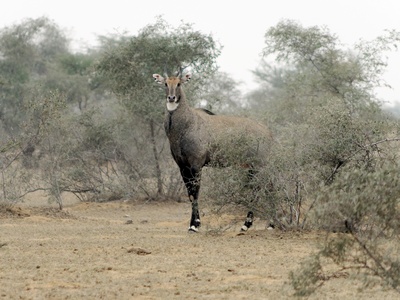
Nilgai
The largest Asian antelope, grazing savanna and agricultural edges. Adaptable to dry forests and scrub, it sometimes ventures into cropland and is important in local ecology.
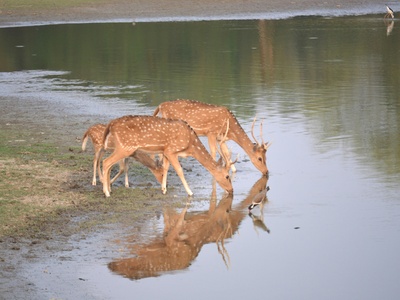
Chital
A spotted deer inhabiting savanna woodlands and grasslands, grazing and browsing in herds. Important prey for large carnivores and often seen near water sources in dry seasons.
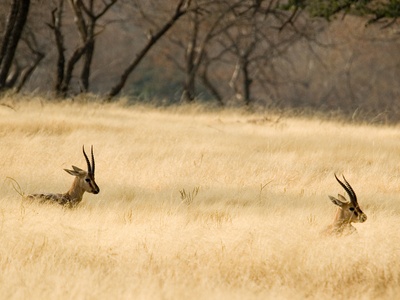
Indian Gazelle
A small, nimble gazelle of Indian arid grasslands and savannas that feeds mainly on grasses and shrubs. Faces pressures from hunting and habitat conversion in fragmented ranges.
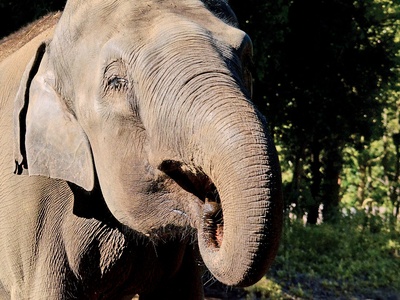
Indian Elephant
A large browser and grazer using savanna-woodland mosaics, critical for seed dispersal and habitat engineering. Social family groups migrate seasonally and face threats from habitat loss and conflict.
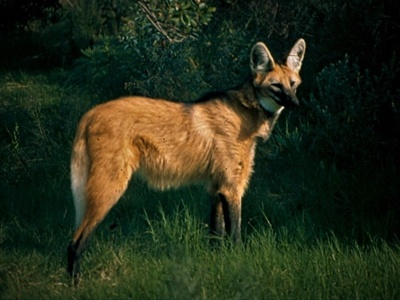
Maned Wolf
A long-legged canid of open cerrado savanna with omnivorous diet including fruits and small animals. Solitary and distinctive in appearance, it plays a unique ecological role in South American savannas.
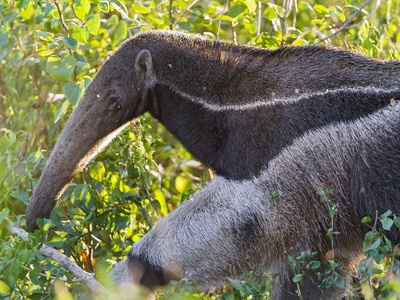
Giant Anteater
A large, long-snouted ant-eating mammal that feeds on ants and termites using a long sticky tongue. Inhabits grassland and savanna mosaics and is sensitive to habitat loss and fire regimes.
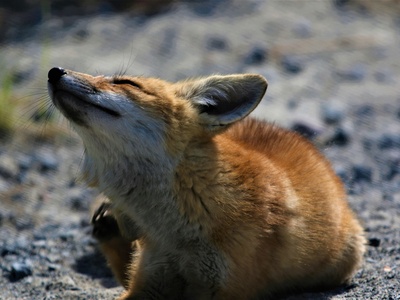
Crab-eating Fox
An omnivorous canid common in South American savannas that eats fruits, small animals, and crabs. Adaptable and often occupies varied savanna and scrub habitats near water.
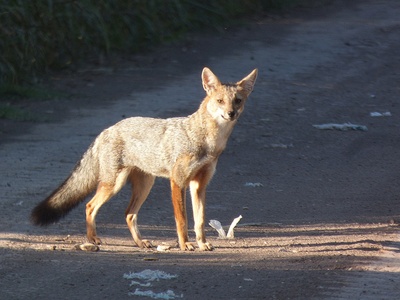
Pampas Fox
A fox of open grasslands and savanna edges that feeds on rodents, insects, and fruit. Flexible diet and habitat use make it a common medium-sized predator in South American plains.
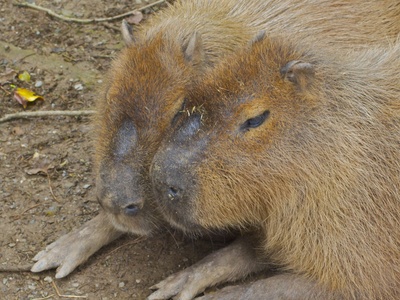
Capybara
The world’s largest rodent, semi-aquatic and grazing wet savanna and floodplain grasses. Lives in social groups near water, influencing wetland vegetation and providing prey for larger predators.
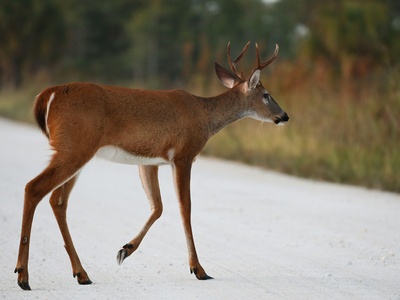
White-tailed Deer
A highly adaptable deer occupying llanos and savanna-woodland edges; browsers and grazers that form small groups. Important game species and influences local plant communities.
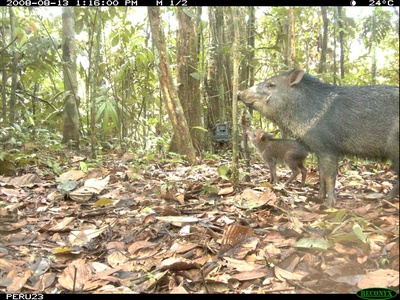
Collared Peccary
An omnivorous suid of open savanna and scrub that forages in groups for roots, fruits, and small animals. Tough and social, peccaries affect seed dispersal and ground vegetation.

Red Kangaroo
The iconic largest marsupial, a powerful grazer of open Australian savannas and plains. Highly adapted to arid life with hopping locomotion and efficient water use; forms loose mobs.
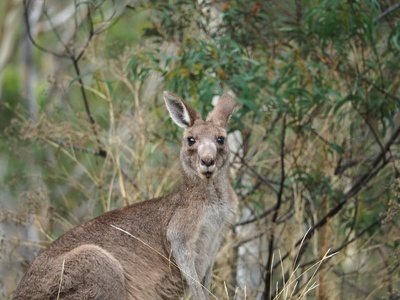
Eastern Grey Kangaroo
A common grazing macropod of grassy savanna and woodlands that feeds on grasses and herbs. Social and widespread, it shapes plant communities through grazing and trampling.
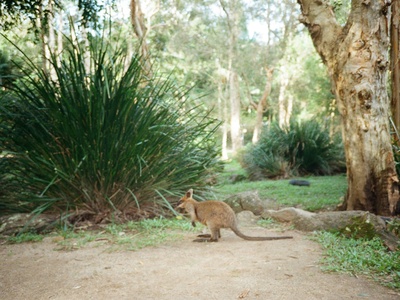
Antilopine Kangaroo
A northern grassland specialist of tropical savannas with long limbs for hopping across open terrain. Feeds mainly on grasses and moves seasonally in response to rainfall.
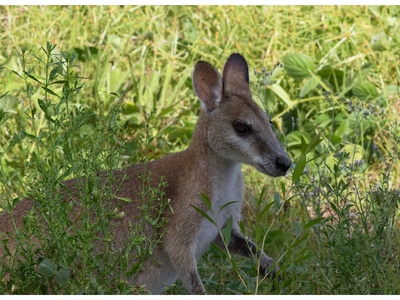
Agile Wallaby
A small, nimble wallaby frequenting grassy savanna and coastal plains, feeding on grasses and herbs. Often solitary or in small groups, it uses dense grass for cover and forage.
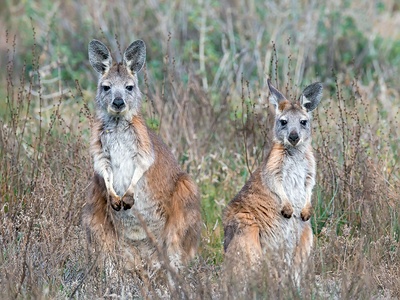
Common Wallaroo
A robust macropod occupying savanna grassland and rocky habitats, adapted to steep terrain and sparse vegetation. Mostly solitary, it browses and grazes across arid to semi-arid landscapes.
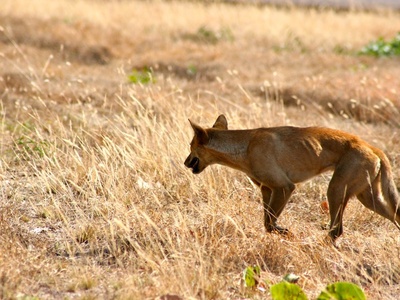
Dingo
A wild canid that acts as an apex predator in savanna and open country, controlling herbivore populations. Faces threats from control programs and hybridization with domestic dogs.
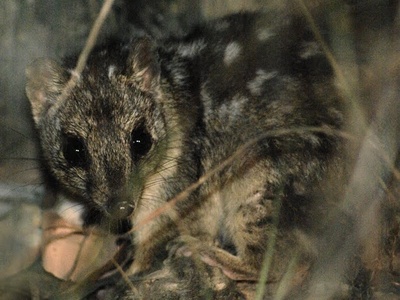
Northern Quoll
A small, carnivorous marsupial of rocky savanna habitats that eats insects, small mammals, and birds. Threatened by invasive species, habitat loss, and poisoning, with urgent conservation needs.
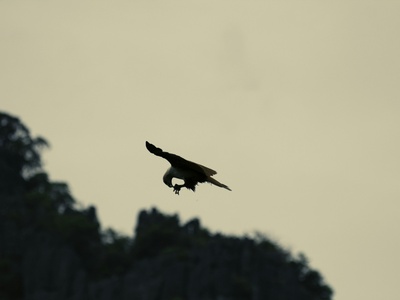
Black Flying-fox
A large fruit bat that roosts in savanna trees and pollinates and disperses seeds for native plants. Forms large colonies and plays a crucial role in maintaining savanna tree diversity.
